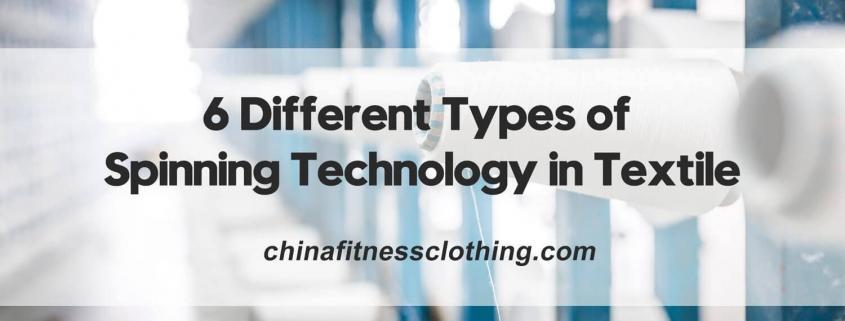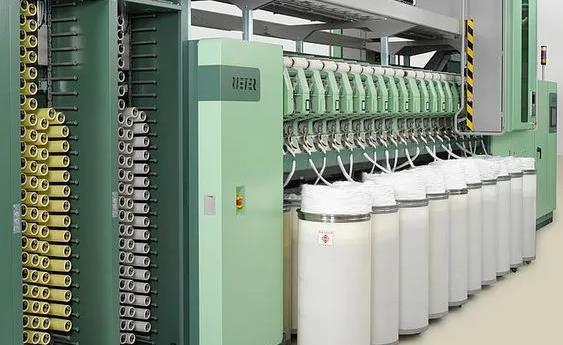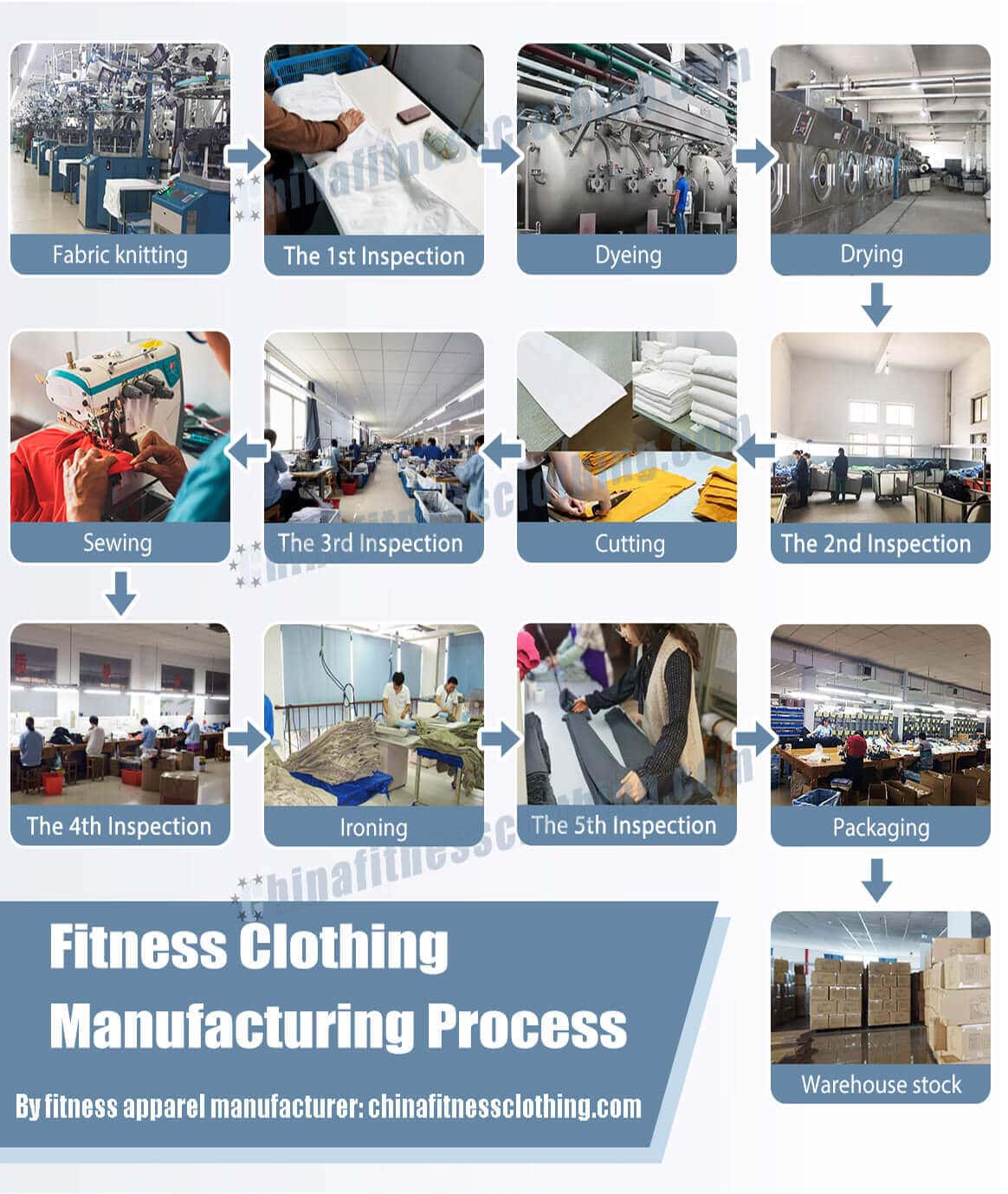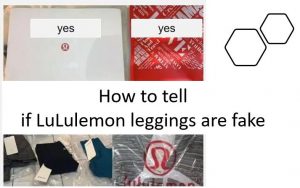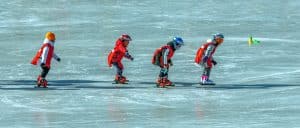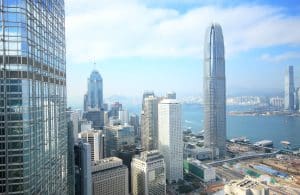This article gives a brief introduction to 6 different types of spinning technology in textile. Spinning originally belongs to a very ancient activity. Since prehistoric times, human beings have learned to spin short fibers into long yarns and then weave them into fabrics and seamless clothing.
The so-called spinning is to take animal or plant fibers and twist them to form a continuous infinite extension yarn, so as to be suitable for weaving.
Different Types of Spinning Technology in Textile: Ring Spinning
Ring spinning is the most widely used spinning method in the market. Ring spinning refers to the introduction of the drawn sliver or roving sliver through the rotation of the ring traveler. The winding speed of the bobbin is faster than that of the traveler. The cotton yarn is twisted into spinning yarn, which is widely used in the spinning engineering of various short fibers. For example, in carding, combing and blending, the coiler is twisted by the bobbin driven by the sliver.
At the same time, the friction of the ring makes the rotation speed slightly less than that of the bobbin. With high spinning speed, ring-spun yarn is in the form of a conical helix with the internal and external transfer of fibers, which makes the fibers intertwined inside and outside of the yarn. The structure of the yarn is compact and its strength is high. It is suitable for various products such as yarn making, weaving and knitting.
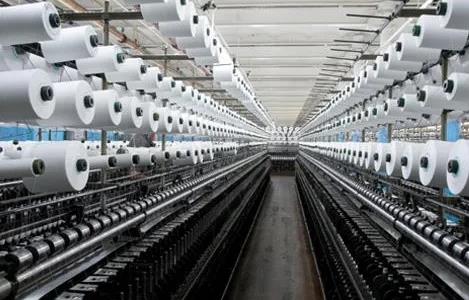
Different Types of Spinning Technology in Textile: Rotor Spinning
Rotor spinning does not use spindles, and mainly relies on multiple components such as opening rollers, rotors, and false twisting devices. The carding roller is used to grab and card the fed sliver fiber, and the centrifugal force generated by its high-speed rotation can throw the grabbed fiber out. The rotor is a small metal cup. Its rotation speed is more than 10 times higher than that of the opening roller. The resulting centrifugal effect expels the air in the cup outwards; according to the principle of fluid pressure, the cotton fibers enter the airflow cup and form a fiber stream, which moves continuously along the inner wall of the cup.
At this time, there is a yarn end outside the cup, which draws out the fibers on the inner wall of the cup and connects them. Coupled with the drilling effect generated by the high-speed rotation of the cup with the yarn tail, it is like “feeding” the cotton fiber while adding the yarn to knead, so that the yarn is connected to the fiber on the inner wall of the cup. Drafting is carried out under the winding tension of the bobbin, and the yarn is continuously output to complete the rotor spinning process.
Different Types of Spinning Technology in Textile: Air-jet Spinning
Air jet spinning is a new spinning method which uses high-speed rotating air to twist the sliver into yarn. Air jet spinning adopts sliver feeding, four roller double short aprons, super draft, and twisting into yarn through fixed nozzle. After the sliver is drawn out, it is wound to the bobbin through the yarn cleaner and directly wound into the bobbin yarn.
Air jet spinning can spin 30-7.4 tex (20-80 British count) yarn, which is suitable for pure spinning and blending of chemical fiber and cotton. Due to the special yarn forming mechanism of air-jet spinning, the structure and properties of air-jet yarn are obviously different from ring spinning, and its products have unique style.
Different Types of Spinning Technology in Textile: Murata Vortex Spinning
Vortex spinning is a new spinning method which uses fixed vortex spinning tube instead of high-speed spinning cup. In a sense, vortex spinning is the real rotor spinning. The fiber strips are fed by the feeding roller, and then released into single fiber by the taker in roller. Under the action of air flow, the fiber strips are fed into the vortex tube at high speed from the cotton conveying pipe.
Vortex tube is composed of core tube and outer tube. There are three tangential air inlets on the outer pipe, and the lower end is connected with the blower. The fan continuously draws air from the pipe, and the outside air enters into the vortex tube along the air inlet to produce vortex like air flow. When the rotating upward airflow reaches the core tube, it converges with the fiber entering the cotton conveying pipe, forms a cohesive fiber ring along the inner wall of the vortex tube, stably revolves around the vortex tube axis, and twists the fiber into yarn.
The yarn is drawn from the leading roller continuously from the guide hole and wound into a package. The main feature of vortex spinning is that the spinning parts with high speed are omitted. The problem of rotational inertia and bearing load caused by high-speed twisting components (such as the rotor of rotor spinning) and the problem of increasing spinning tension due to the air ring formed in spinning (such as ring spinning) are eliminated by using air twisting.
Different Types of Spinning Technology in Textile: Siro Spun
Siro spinning is also called “a” and “B” yarn in China, and recently officially named Siro spun. Siro spun is to feed two rovings with a certain distance on the spinning frame. After drafting, the two single yarn slivers are output from the front roller. Due to the transmission of twist, a small amount of twist is found on the single yarn sliver. After splicing, it is further twisted into a yarn similar to the plied yarn and wound on the bobbin.
The original design of Siro spun is to be used in wool spinning. It is characterized by less hairiness, high strength and good wear resistance. It can achieve the effect that wool yarn can be woven by single yarn, so as to realize the lightness of wool fabric. Although Siro spun is much better than the same kind of conventional yarn in many aspects, there is still a certain distance to reach the goal of worsted single yarn non sizing weaving. Since then, this method has been abandoned in wool spinning, but it has been used in blended spinning such as t / C, c.v.c.
It is very popular because it can produce a twist effect and a good handle after dyeing. Recently, due to the improvement of hairiness, such as spinning some fibers easy to produce hairiness (such as rayon, modal, Tencel, soybean fiber), and even all cotton is produced by this method. The raw material grade of Siro spun is lower than that of conventional ring-spun yarn, and its fabric has less hairiness, soft handle, wear resistance and good air permeability.
Different Types of Spinning Technology in Textile: Compact Spinning
Compact spinning is a new spinning technology that is spun on the improved new ring spinning frame. The main spinning mechanism is that a fiber condensation zone is added in front of the traction device of the ring-spinning frame, and the twisting triangle area between the front roller and the twisting point is basically eliminated. After the fiber strand is exported from the front of the front roller, it passes through the special-shaped suction pipe and is covered with a mesh leather ring.
Due to the contraction and polymerization of airflow, the whiskers are gathered and rotated through the suction groove of the special-shaped pipe, and gradually turns from flat ribbon to cylinder. The ends of the fiber dimension are twisted into the yarn, so the yarn is very compact, the appearance of the yarn is smooth and has less hairiness. The compact spinning yarn has higher strength and less hairiness. In the process of knitting, it is most difficult to produce sanding.

